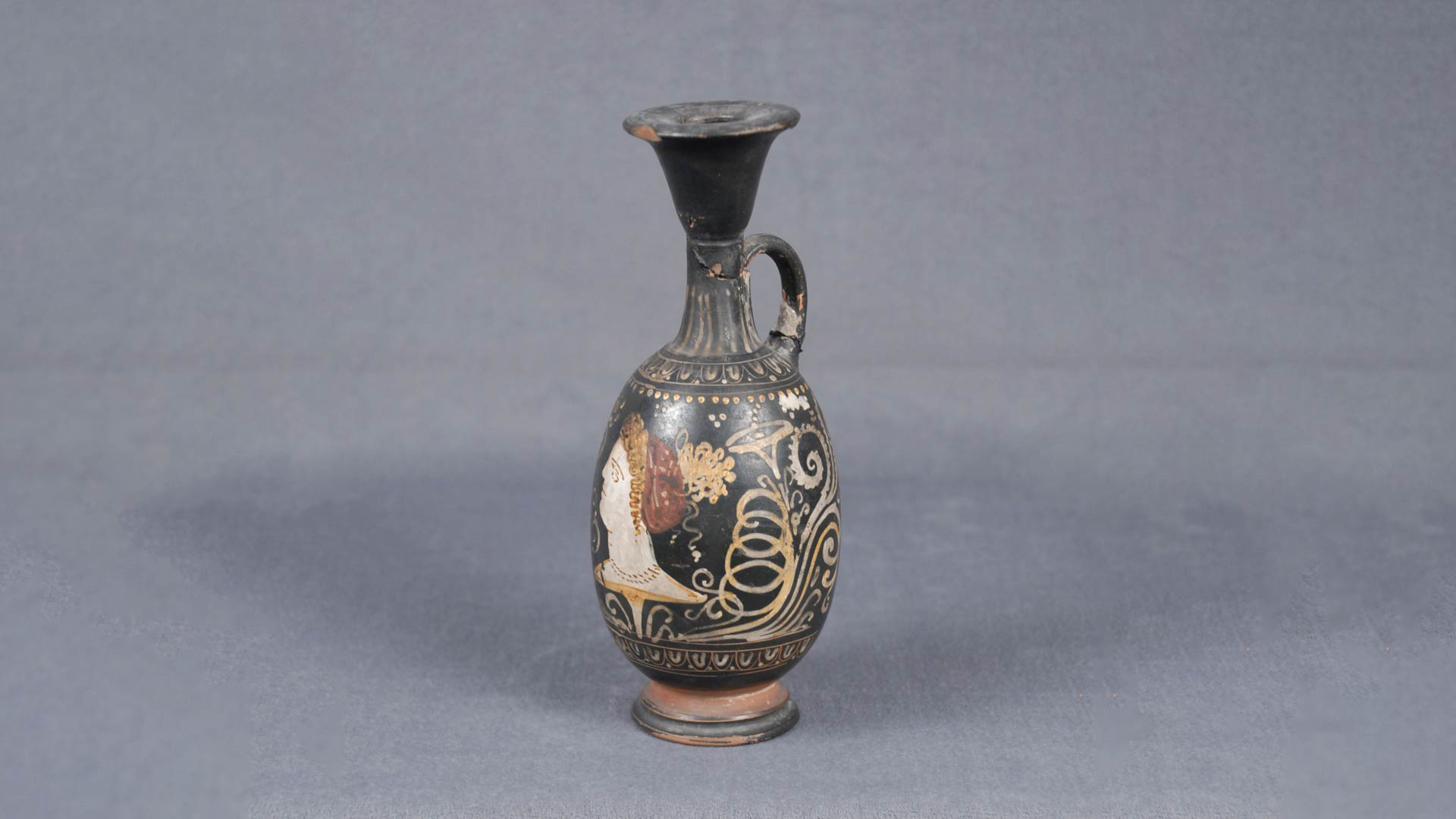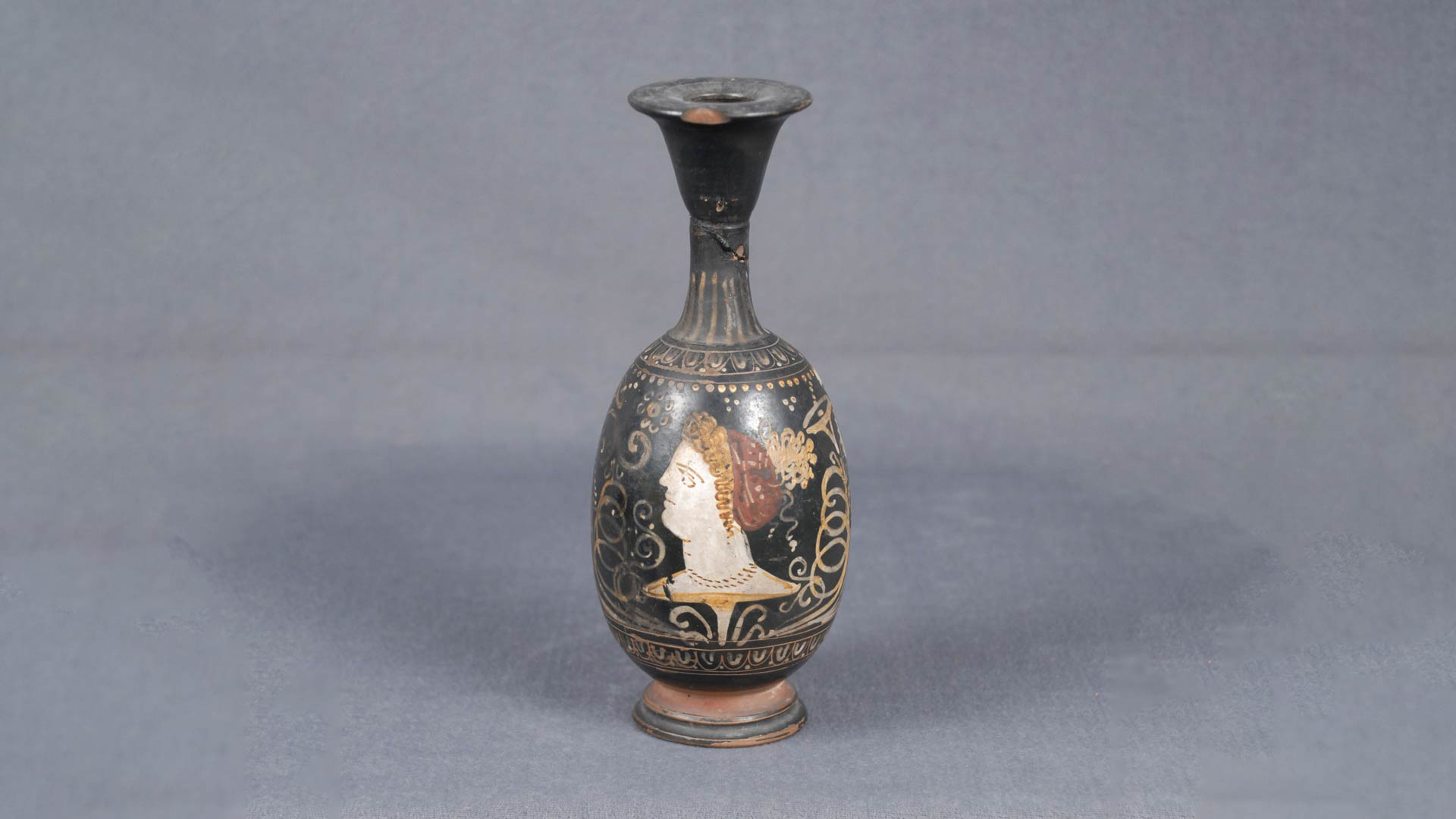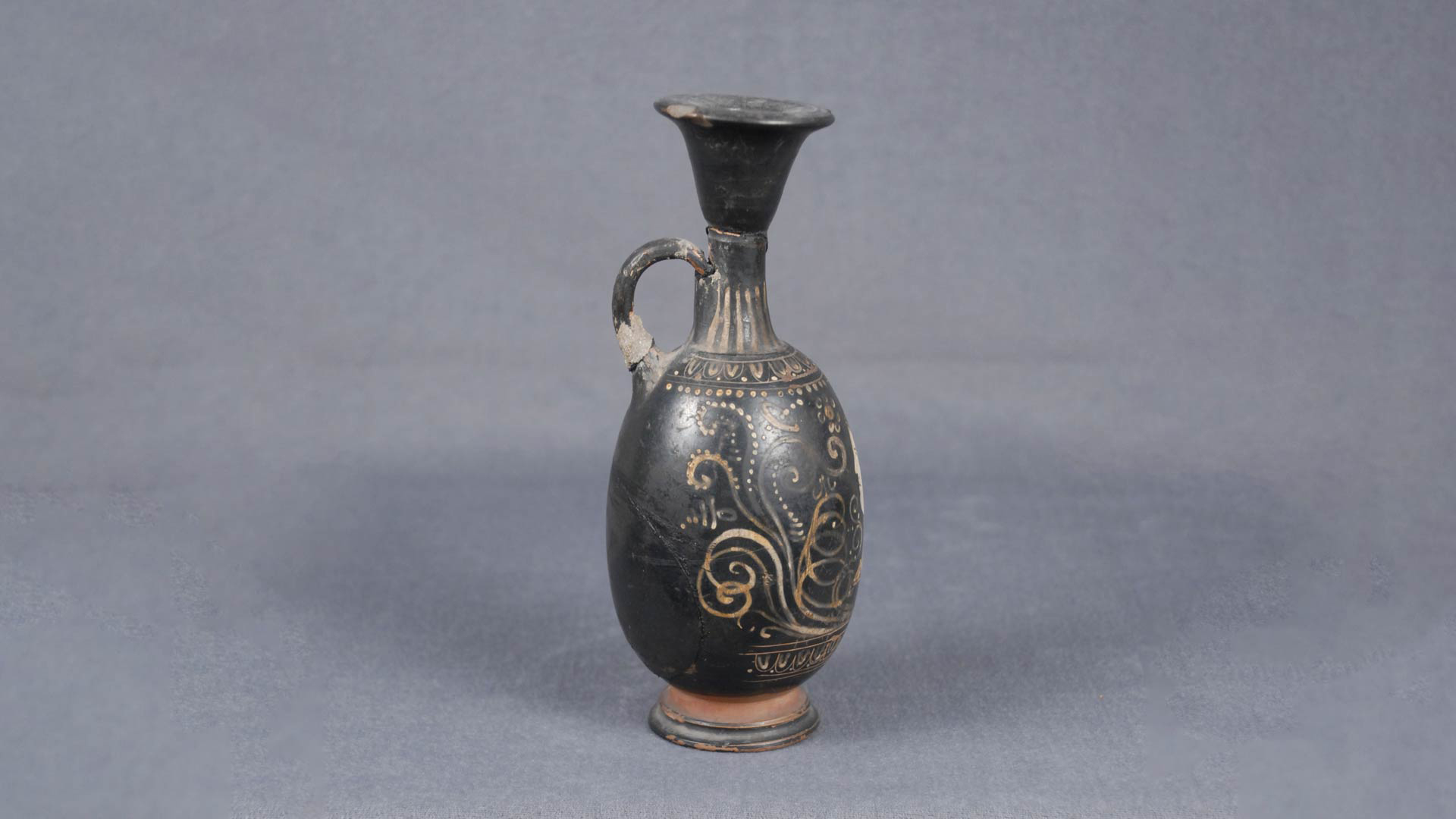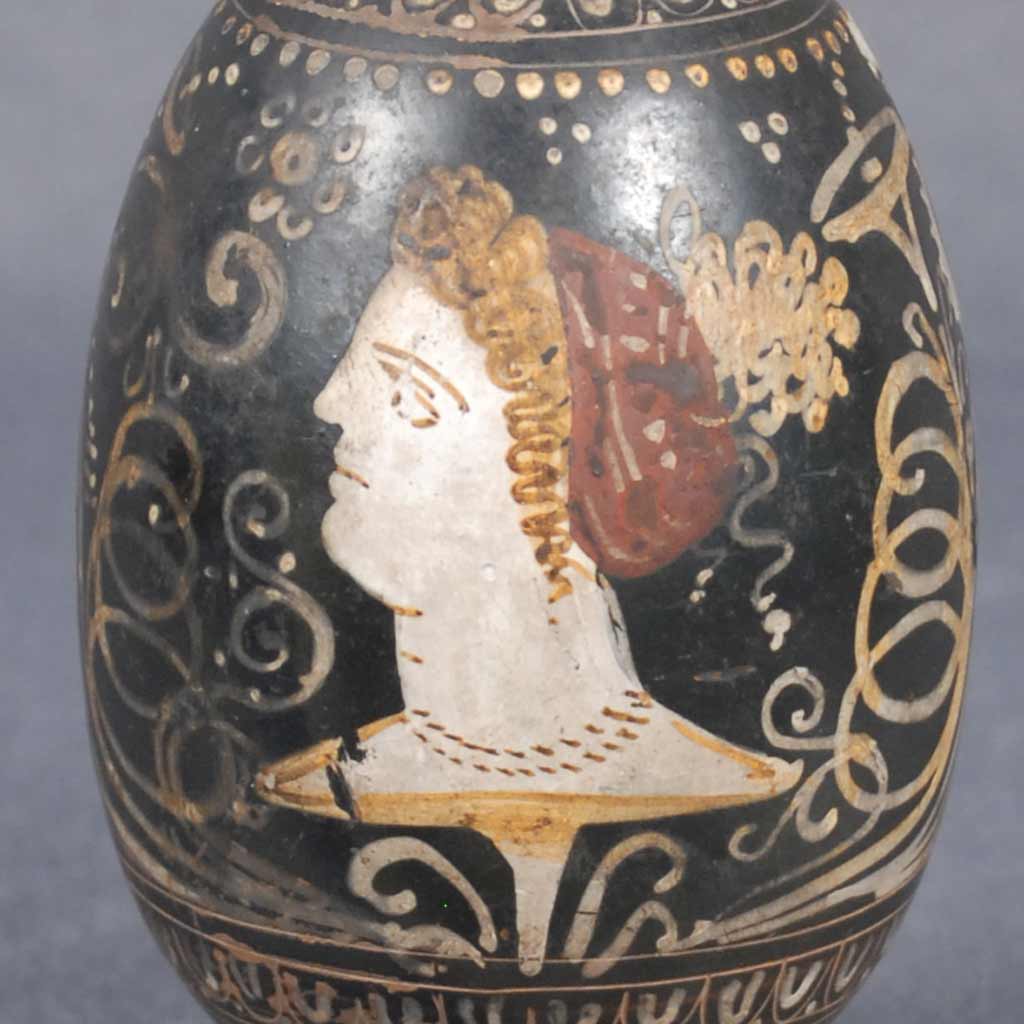
Featured Object: Oil Bottle (Lekythos)
- Post Date: 3/15/2023
- Author: Beth Watkins
- Reading Time: 2 minute read
In the 700s and 600s BCE, immigrants and traders from Greece began establishing colonies around the Mediterranean, including southern Italy. These new settlements originally imported valuable pottery from the region of Athens back in Greece, but by the end of the 400s they were making their own decorated vessels with increasingly elaborate designs.
Some of the largest and most ornate vessels served as tomb offerings. This small oil bottle (lekythos) was also probably used in funerary rituals and then placed in a grave. It bears a motif that first appeared in late classical Greek wall painting and mosaics. It comes from the region of Apulia on the “heel” of the boot-shaped Italian peninsula.
A woman’s head emerges like a flower, her hair with vine-like tendrils, among ornate spirals, buds, and blossoms—perhaps an expression of irrepressible life. The same motif appears on the foot of the very large mixing vessel on display in the Mediterranean Gallery (1982.06.0001).
This piece came to campus in 1922 as part of a purchase of 272 Greek and Roman antiquities from the University of Marburg in Germany. It is possible that the desperate financial situation of Germany after World War I led to the sale of duplicates from the Marburg’s classical holdings.
Lekythos
Apulia, Italy, ca. 330 BCE.
Terracotta, pigment, glaze.
1922.01.0048.
Text adapted from our temporary exhibit Collecting and Connecting: One Hundred Years at the Spurlock Museum (external link).
-
- Share:
- Subscribe to Newletter
- Giving



